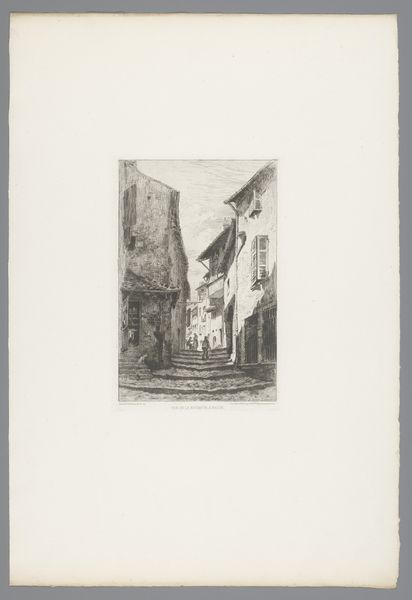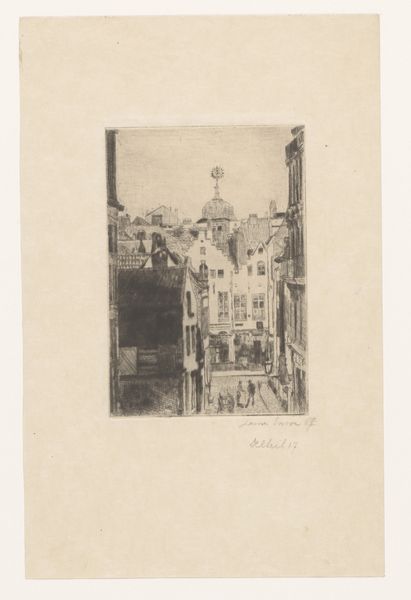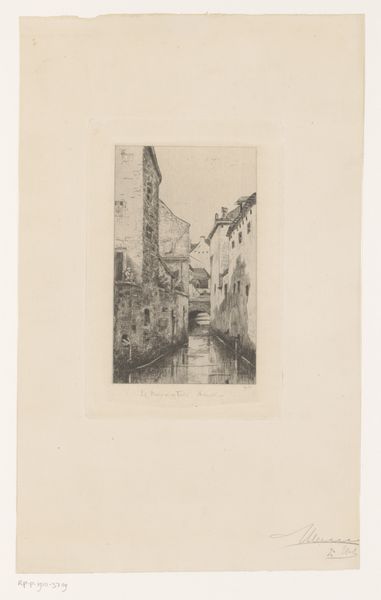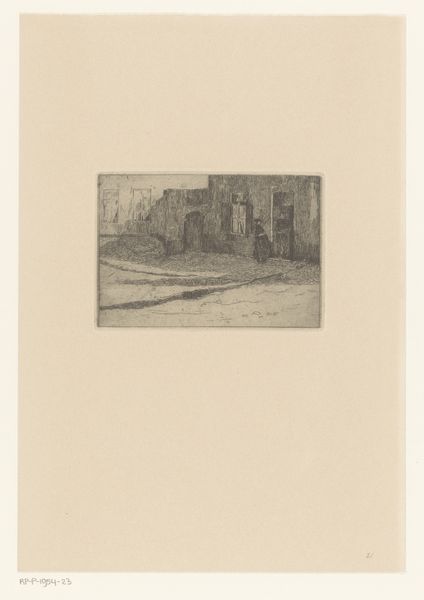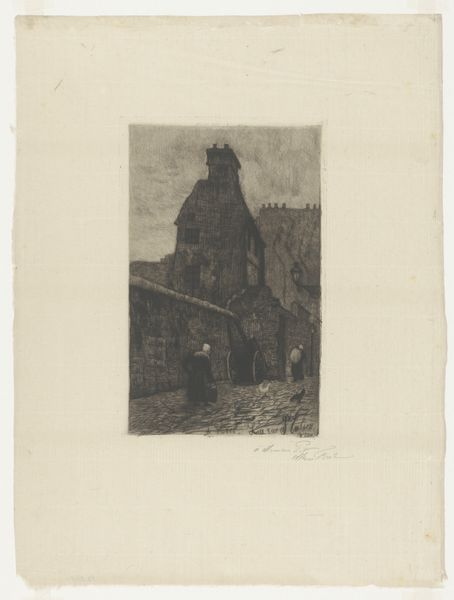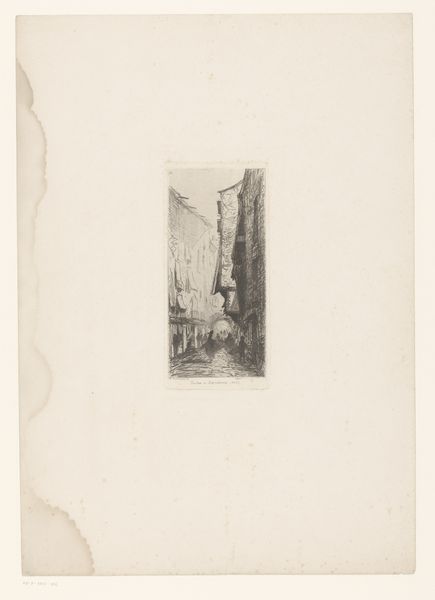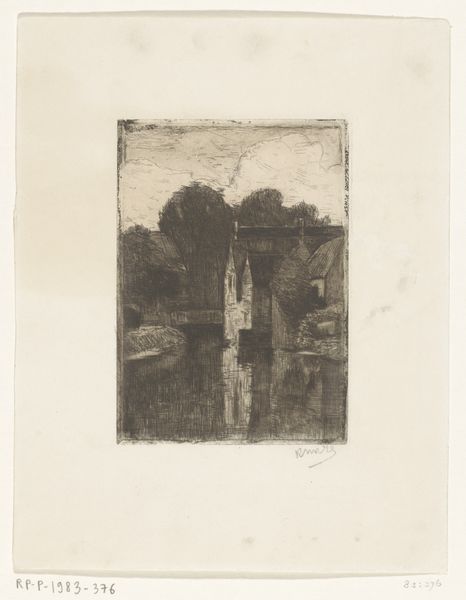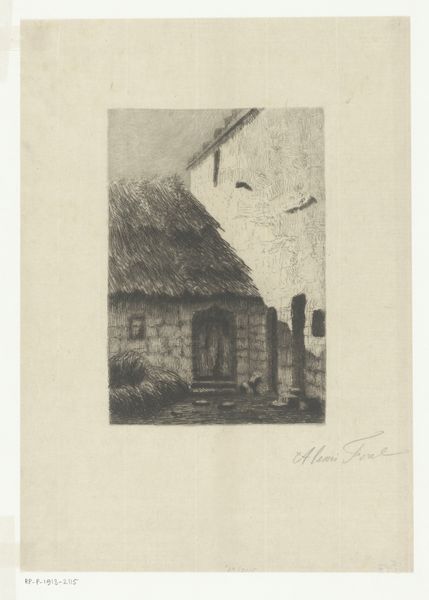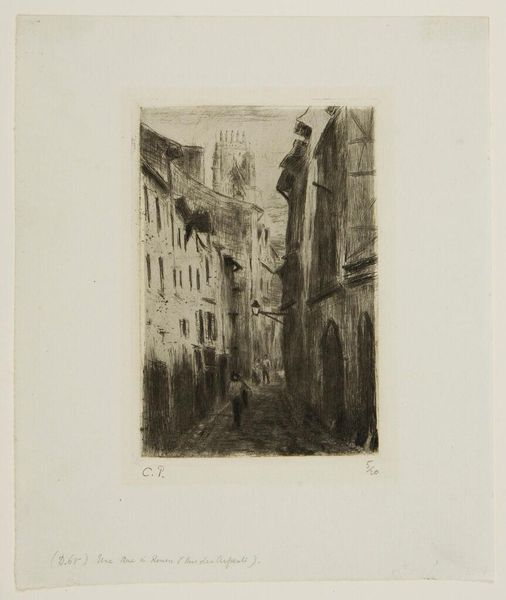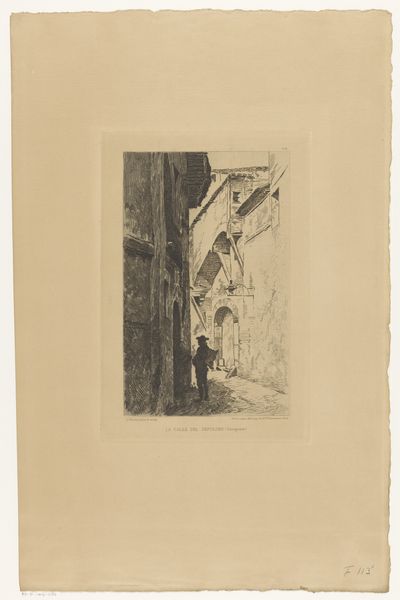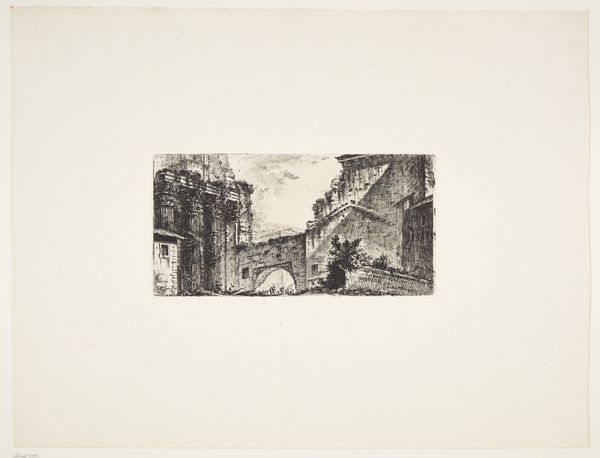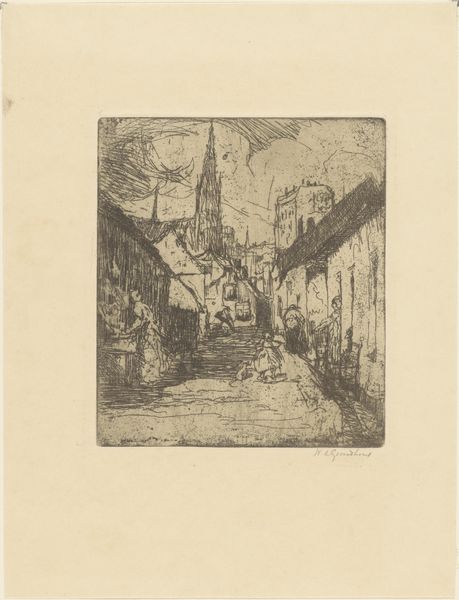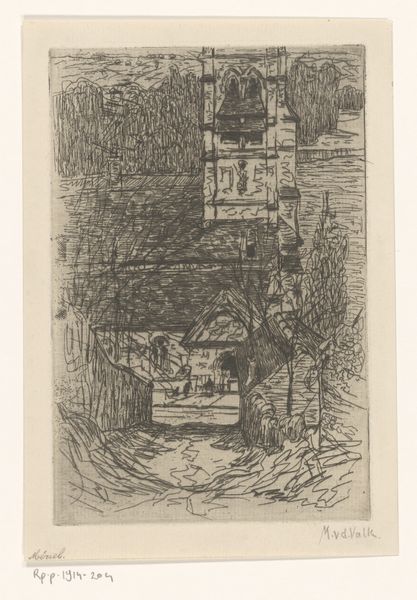
print, etching
# print
#
impressionism
#
etching
#
landscape
#
cityscape
#
street
Dimensions: height 179 mm, width 109 mm
Copyright: Rijks Museum: Open Domain
Editor: So, this is "Smalle straat met zwaaiende vrouw" by Henri Kervyn van Lettenhove, made in 1879. It’s an etching, and I’m immediately drawn to how the artist uses light and shadow to create depth in the narrow street. It feels almost theatrical, like a stage set. What's your take on this piece? Curator: Well, considering this print was made in 1879, its depiction of a small street offers an intriguing glimpse into the urban experience of that time. How did representations of the city and its inhabitants influence, or get influenced by, societal change? Let’s also consider Impressionism, it attempted to depict real life but also helped form the perception of daily urban life and the way the city was lived in and imagined. Notice how the architectural details on each side press in and define the social space. Editor: So you're saying that how he portrays this street influences how we perceive urban spaces at the time? Curator: Exactly! The printing press at the time was becoming widespread; imagery could circulate freely. A scene like this helped to normalize a view and even romanticize or condemn elements of life. How does this artwork, being so dark and atmospheric, relate to other visual depictions circulating at the time? Editor: I see your point about wider accessibility impacting its public influence... Curator: Now consider the implied socio-economic aspects... the implied social hierarchy between building inhabitants, the role of women as passersby... Editor: So many angles to consider beyond just the aesthetic. I appreciate that—thank you! Curator: My pleasure. Always consider what that artwork may signify in a time of ever accelerating urbanization. How can this tell us about historical representations and, subsequently, societal attitudes of the 19th Century? Editor: Definitely something to think about!
Comments
No comments
Be the first to comment and join the conversation on the ultimate creative platform.
